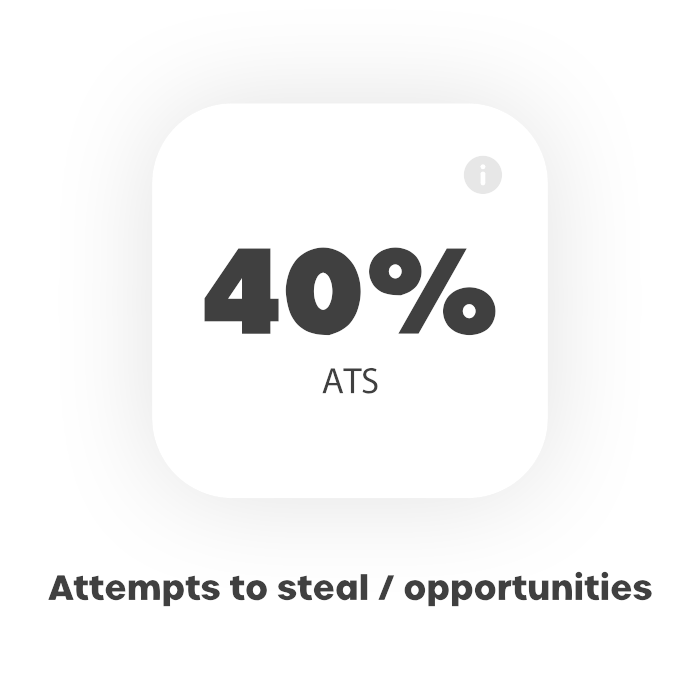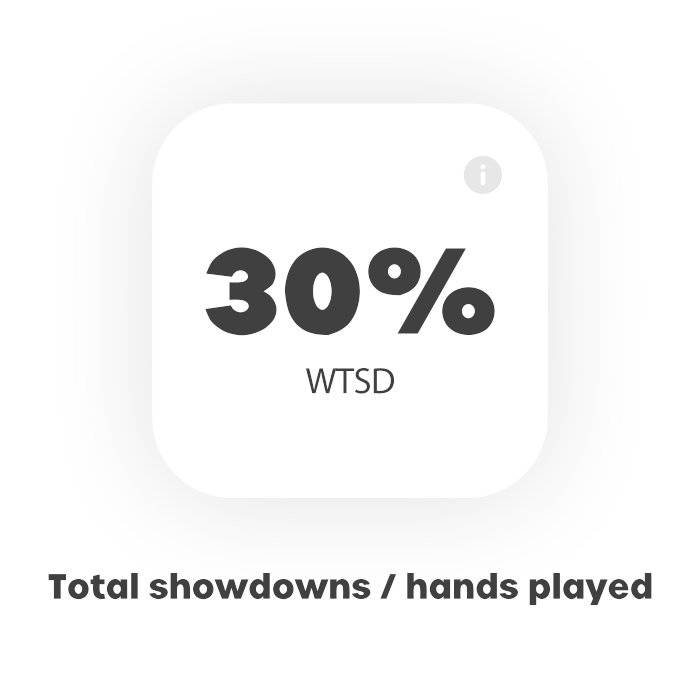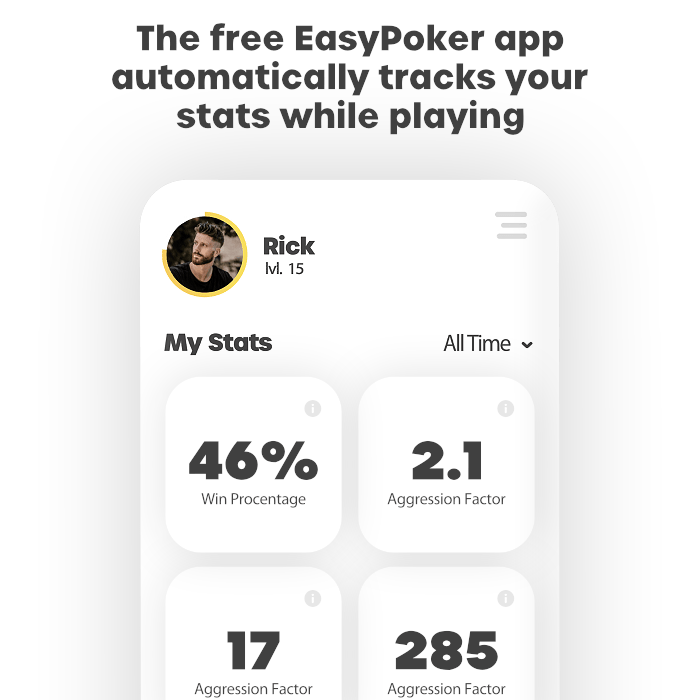Important Poker Stats
So you want to learn the most important poker stats? We’ve got you covered.
Poker is a game of skills and strategy. One thing that truly separates the good players is their understanding of key metrics. How to calculate them, read them and learn from them.
There are several important poker stats you should know such as PFR, VPIP and aggression factor. In this blogpost, we’ll explore these stats and explain what they mean, how to calculate them and how to use them to your advantage.
How to track your poker stats
Keeping track of your poker stats is the best and fastest way to improve your skills.
Most players would be surprised to see their stats, as we often think we have a certain playing style which then turns out to be wrong.
But the numbers don’t lie, and there are actually some numbers that return a higher win percentage than others. Tracking your stats is also a great way to tell if you’re improving as a poker player.
But, keeping track of your poker stats while playing can be a hassle. You don’t want to sit there with pen and paper, writing everything down and missing all the fun of a poker night. That’s why our free EasyPoker app automatically tracks everything for you.
No need for pricey third-party software – all you have to do is just play your cards and then go to your stats page for a quick look from time to time.
This allows you to keep track of your playing style and progress without the hassle.
Preflop raise (PFR)
Preflop raise, or PFR, is a poker stat that represents the percentage of hands in which a player raises before the flop. So, before they’ve seen anything but the cards in their hand. This is an important poker stat, because it indicates how aggressive a player is, since raising before the flop is considered a very aggressive move. A high PFR indicates that a player is very aggressive and likely to raise with a wide range of starting hands, while a low PFR indicates that a more passive player who only raises with strong starting hands.
Every game is of course different, but most agree that a good PFR is between 10-20%.
Ideally, it should be 2 or 3% lower than your VPIP (See next stat).
How to calculate PFR
Preflop raise (PFR) is calculated by dividing the number of hands in which you raise before the flop by the number of hands you’ve played. For example, if you raise with 80 hands out of 400 total hands, your PFR would be 20%.
Of course, if you guys are using the free EasyPoker app to facilitate your game (physical or digital) – the app automatically tracks your PFR and displays it to you.

Voluntarily Put Money In Pot (VPIP)
Voluntarily Put Money In Pot, or VPIP, is a poker stat that shows the percentage of hands in which a player voluntarily commits money in the pot. It has to be voluntarily so blinds and ante does not count. It only looks at times a player calls, bets or raises. Again, a high VPIP indicates an aggressive player who plays many hands, while a low VPIP indicates a more tight player who plays a lot fewer hands.
Every game is of course different, but most agree that a good VPIP is 15-20%.
This means you’re tight aggressive, which is the most winning style in poker today.
How to calculate VPIP
Voluntarily Put Money In Pot (VPIP) is calculated by dividing the number of hands in which you voluntarily put money into the pot by the total number of hands played.
For example, if you’ve played 400 hands and put money into 100 of those, your VPIP would be 25%.
And of course, if you guys are using the free EasyPoker app to facilitate your game (physical or digital) – the app automatically tracks your VPIP and displays it to you.

Aggression factor (AF)
Aggression factor, or AF, is a poker stat that indicates how aggressive a player is by looking at the frequency of aggressive moves like bets and raises, to more passive moves like checking and calling.
A high aggression factor of course means that a player is very aggressive, and a lower one indicates a more passive player. This stat is important, and shows you a lot about a player’s style of play. Some players, like Gus Hansen or Doyle Brunson, excite us and become legends from a very aggressive playing style.
Every game is of course different, but in today’s poker, a good aggression factor would be around 3.
How to calculate aggression factor (AF)
Aggression factor is calculated by dividing your number of aggressive moves, like bets and raises, with the number of passive moves like checking and calling.
For example, if you’ve made 20 aggressive moves and 40 passive moves, your aggression factor would be 20/40 = 0.5.
And of course, if you guys are using the free EasyPoker app to facilitate your game (physical or digital) – the app automatically tracks your aggression factor and displays it to you.

Attempting to steal (ATS)
Attempting to steal, or ATS, is when you make an aggressive move in late position in a ballsy attempt to scare all others into folding – thereby ‘stealing’ the blinds/ante.
It’s a very useful strategy that helps you build your chip count without risking too much.
ATS is the poker stat that keeps track of how often you attempt to steal like that.
A high ATS indicates an aggressive player who is willing to take risks and play a wide range of hands in late position, while a lower ATS indicates a more passive player.
The ideal ATS really depends on your playing style, but I would recommend a relative high ATS of around 40%.
How to calculate ATS
Attempt to steal (ATS) is calculated by dividing the number of times you’ve attempted to steal by the total number of opportunities to do so. For example, if you’ve played 50 hands on the button and attempted to steal the blind 20 times, your steal attempt percentage would be 40%.
And of course, if you guys are using the free EasyPoker app to facilitate your game (physical or digital) – the app automatically tracks your ATS and displays it to you.

Went to showdown (WTSD)
Went to showdown, or WTSD, is the poker stat that tracks how many of the hands you play that actually make it all the way to showdown before getting settled.
It can help you determine how often a player is willing to put their hands to the test and reveal their cards. A high WTSD indicates that a player is more likely to see a hand through.
The ideal WTSD depends on your playing style, but it’s generally believed that a good WTSD is around 30%.
How to calculate WTSD
Went to showdown (WTSD) is calculated by dividing the number of times you went to showdown by the total number of hands you played. For example, if you played 100 hands and went to showdown in 20 of them, your WTSD would be 20%.
But of course, if you guys are using the free EasyPoker app to facilitate your game (physical or digital) – the app automatically tracks your WTSD and displays it to you.

Won money in showdown (W$SD)
Won money in showdown, or W$SD, is the poker stat that shows how often you win a pot after taking it to showdown. Having a high W$SD is obviously a good thing, and it tells you if you choose the right times to go to a showdown.
How to calculate W$SD
Won money in showdown (W$SD) is calculated by dividing the number of showdowns in which you’ve won the pot by the total number of showdowns you’ve been a part of.
For example, if you went to showdown 20 times and won the pot 10 of those times, your W$SD would be 50%.
And if you guys are using the free EasyPoker app to facilitate your game – physical or digital – the app automatically tracks your W$SD and displays it to you.

Private poker games
If you and your friends are looking for an easy way to play poker with friends on a private table, we’ve got you! Try our free EasyPoker app.
EasyPoker let’s you create a private poker game and invite friends. Now you don’t need physical chips or cards to play – our app takes care of everything.
It can even track your hands and stats so you don’t have to – all you have to do, is just play your cards and have fun with your friends.
More poker strategy
If you’re looking to upgrade your poker skills, we have a vast library of guides.
Check out these two guides that will help you improve your skills instantly.








